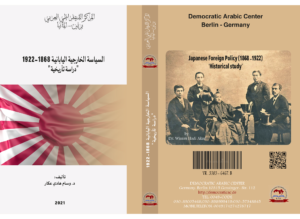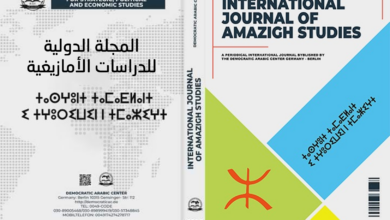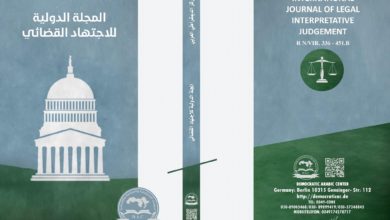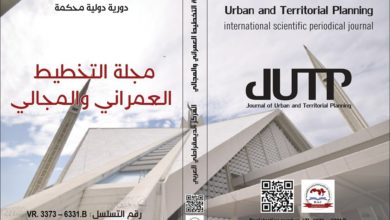السياسة الخارجية اليابانية (1868-1922) دراسة تأريخية
Japanese Foreign Policy (1868-1922) Historical study
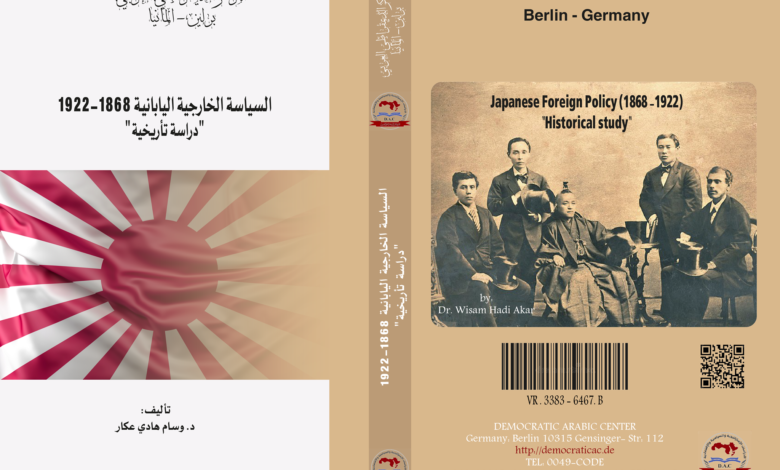
تأليف : أ.م.د. وسام هادي عكار – وزارة التربية العراقية/ المُديرية العامة لتربية بغداد/ الكرخ الثانية
نسخة “pdf”-
السياسة الخارجية اليابانية (1868-1922) دراسة تأريخية
الطبعة الأولى “2021″ –من كتاب: – السياسة الخارجية اليابانية (1868-1922) دراسة تأريخية
جميع حقوق الطبع محفوظة #المركز_الديمقراطي_العربي ولا يسمح بإعادة إصدار هذا الكتاب أو اي جزء منه أو تخزينه في نطاق إستعادة المعلومات أو نقله بأي شكل من الأشكال، دون إذن مسبق خطي من الناشر .
تقديم:
تُعد السياسة الخارجية عملية دينامية متصلة ومستمرة غايتها تحقيق المصلحة القومية عن طريق توظيف ادوات عدة، سياسية، اقتصادية، عسكرية، ثقافية ..الخ. وبطبيعة الحال لا تخرج السياسة اليابانية عن هذا الإطار. وبهذا الصدد، بدتْ الدبلوماسية اليابانية تتعامل مع العالم الخارجي في منتصف القرن التاسع عشر، وكانت بدايتها قلقة ومضطربة؛ لأنها جاءت بعد قرنين من الانعزال التام عن العالم الخارجي، إذ منحها موقعها الجُغرافي نوعًا فريدًا من العزلة السياسية أتاح لليابان الابتعاد عن المشكلات الخارجية التي تعرضت لها القارة الأسيوية عبر التأريخ.
تميز عهد الإمبراطور(موتسوهيتو 1868-1912) ، الذي عُرف بـ(ميجي- الحكم المستنير)، بالإنفتاح والتحديث، إذ أضحتْ اليابان دولة عصرية ذات مؤسسات متطورة وصناعات حديثة، بفضل الإصلاحات الدستورية التي شملت مجالات الحياة كافه. لذا، جاءت هذه الدراسة لتُميط اللثام ولو بشكل موجز عن السياسة الخارجية اليابانية منذ تسنم الإمبراطور ميجي الحكم عام 1868 إلى عقد مؤتمر واشنطن البحري عام 1922 والنتائج التي تمخضت عنه.
اقتضت طبيعة الدراسة تقسيمها إلى مقدمة وثلاثة فصول وخاتمة، تطرق الفصل الأول إلى مسارات السياسة الخارجية اليابانية ( 1868-1895) في حين درس الفصل الثاني سياسة اليابان الخارجية حيال الدول الكبرى( 1895-1914). بينما تناول الفصل الثالث السياسة الخارجية اليابانية (1914-1922). إعتمدت الدراسة على المنهج الوصفي التحليلي، أخذًا بالحسبانِ الموائمة ما بين التسلسُل التأريخي ووحدة الموضوع، ساعيًا التوصل إلى إجاباٍت موضوعيٍة تشكل بمُجملها هدف الدراسة.
Assistant Professor Dr. Wisam Hadi Akar
Abstract
Foreign policy is a continuous and dynamic process aimed at realizing or striving to achieve the national interest by employing several tools, political, economic, military, cultural, etc. Of course, Japanese politics does not fall outside this framework. In this regard, Japanese diplomacy seemed to deal with the outside world in the mid-nineteenth century, and its beginning was worried and troubled; Because it came after two centuries of complete isolation from the outside world, as its geographical location gave it a unique kind of political isolation that allowed Japan to move away from the external problems that the Asian continent had been exposed to through history.
The reign of the Emperor (Mutsuhito 1868-1912), known as the “Meiji-Enlightened Rule”, was characterized by openness and modernization, as Japan became a modern country with developed institutions and modern industries, thanks to constitutional reforms that covered all areas of life. Therefore, this study came to reveal even a brief summary of Japanese foreign policy since Emperor Meiji seized power in 1868 to the Washington Maritime Conference in 1922 and the results that resulted from it.
The nature of the study required its division into an introduction, three chapters and a conclusion. The first chapter touched on the tracks of Japanese foreign policy (1868-1895), while the second chapter examined Japan’s foreign policy towards the major countries (1895-1914). The third chapter deals with Japanese foreign policy (1914-1922). The study relied on the descriptive analytical method, taking into account the compatibility between the historical sequence and the unity of the subject, seeking objective answers that constitute the overall objective of the study.
- الناشر: المركز الديمقراطي العربي للدراسات الإستراتيجية والسياسية والاقتصادية

